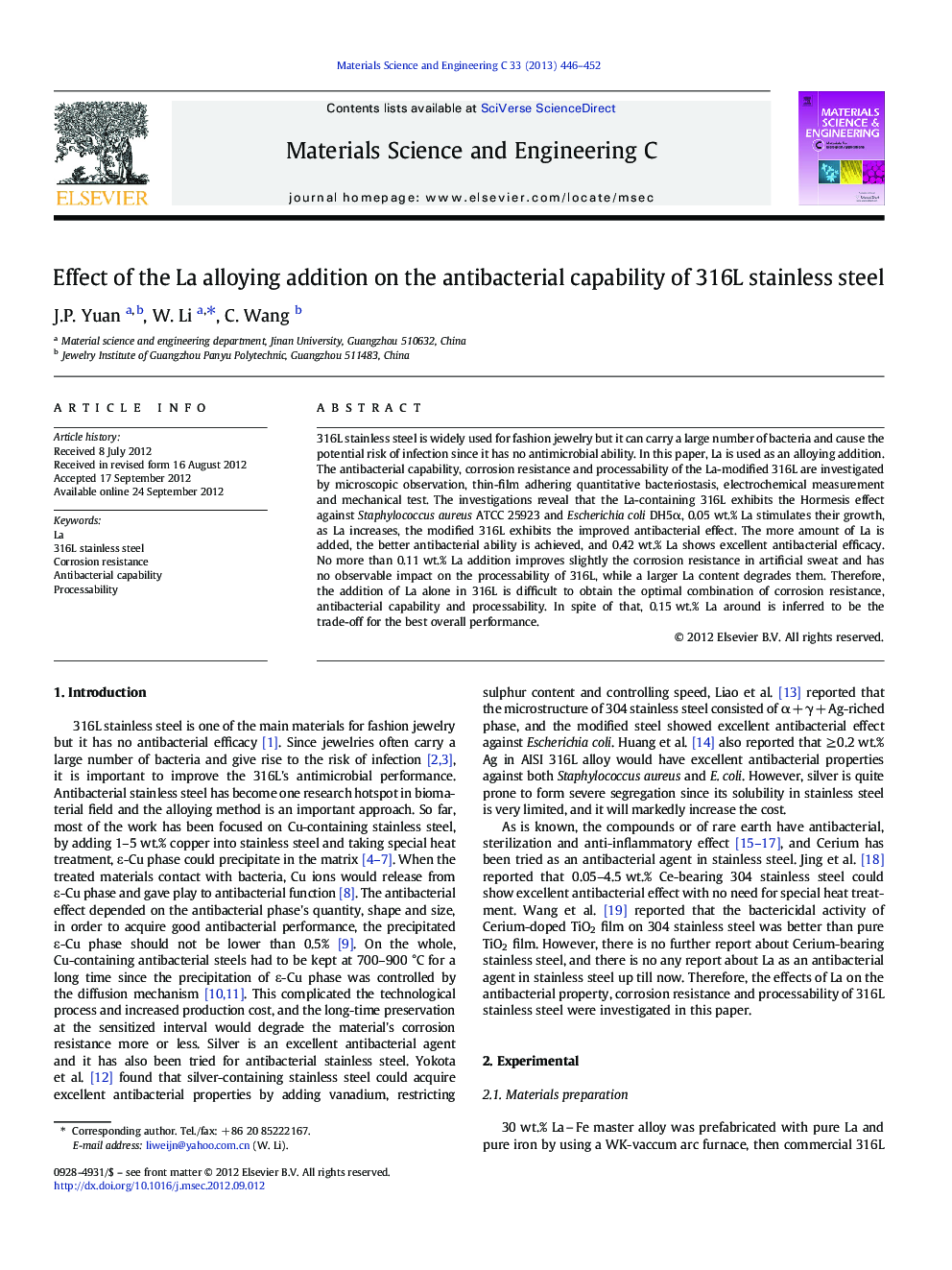| Article ID | Journal | Published Year | Pages | File Type |
|---|---|---|---|---|
| 1429094 | Materials Science and Engineering: C | 2013 | 7 Pages |
316L stainless steel is widely used for fashion jewelry but it can carry a large number of bacteria and cause the potential risk of infection since it has no antimicrobial ability. In this paper, La is used as an alloying addition. The antibacterial capability, corrosion resistance and processability of the La-modified 316L are investigated by microscopic observation, thin-film adhering quantitative bacteriostasis, electrochemical measurement and mechanical test. The investigations reveal that the La-containing 316L exhibits the Hormesis effect against Staphylococcus aureus ATCC 25923 and Escherichia coli DH5α, 0.05 wt.% La stimulates their growth, as La increases, the modified 316L exhibits the improved antibacterial effect. The more amount of La is added, the better antibacterial ability is achieved, and 0.42 wt.% La shows excellent antibacterial efficacy. No more than 0.11 wt.% La addition improves slightly the corrosion resistance in artificial sweat and has no observable impact on the processability of 316L, while a larger La content degrades them. Therefore, the addition of La alone in 316L is difficult to obtain the optimal combination of corrosion resistance, antibacterial capability and processability. In spite of that, 0.15 wt.% La around is inferred to be the trade-off for the best overall performance.
► Minor La improves 316L 's corrosion resistance while large content degrades it. ► The La-containing 316L exhibits the Hormesis effect against S. aureus. ► The more amount of La is added, the better antibacterial capability is achieved. ► Small La content has no harm to 316L's processability while large content does. ► 0.15 wt.% La is inferred to be the best trade-off among all properties of 316L.
